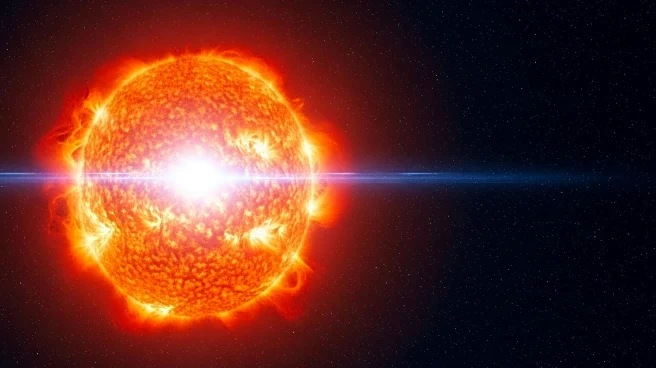What's Happening?
A study from the University of St Andrews has revealed that particles in solar flares may be 6.5 times hotter than previously estimated. The research, published in The Astrophysical Journal Letters, suggests that solar flare ions can reach temperatures over 60 million degrees, significantly higher than earlier assumptions. This finding provides a potential solution to a long-standing mystery regarding the temperature differences between ions and electrons in solar flares. The study highlights the role of magnetic reconnection in heating ions more intensely than electrons, challenging historical assumptions in solar physics.
Why It's Important?
The discovery of higher temperatures in solar flares has implications for our understanding of solar activity and its effects on space weather. Solar flares can impact Earth's upper atmosphere, posing risks to satellites and astronauts. By providing a clearer picture of the conditions within solar flares, this research could improve predictions of space weather events and their potential impacts. The findings also contribute to the broader field of astrophysics by addressing a mystery that has persisted for nearly 50 years, offering new insights into the dynamics of solar plasma.
Beyond the Headlines
The study's findings challenge traditional views in solar physics, suggesting a need for a paradigm shift in how solar flare temperatures are understood. The research underscores the importance of revisiting established theories with modern data and methodologies. This approach could lead to further breakthroughs in understanding the Sun's behavior and its influence on the solar system.












